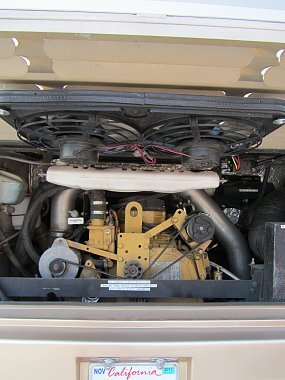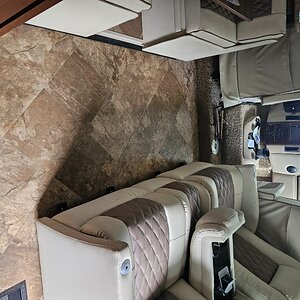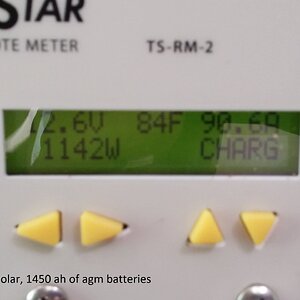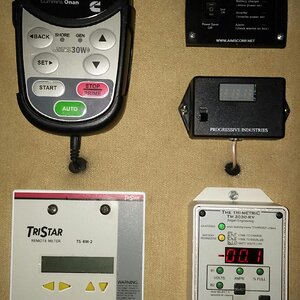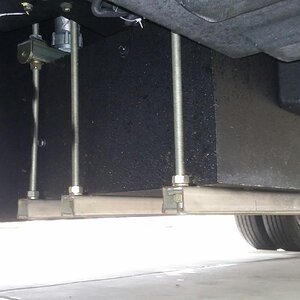MarkMaxPayne
RVF Supporter
- Joined
- May 24, 2023
- Messages
- 281
- Location
- Beaverton, OR
- RV Year
- 2013
- RV Make
- Newmar
- RV Model
- New Aire 3543
- RV Length
- 36'
- Chassis
- Spartan
- TOW/TOAD
- Fiat 500 Turbo
- Fulltimer
- No
Noice!!! Please keep us up to date. I may be looking for a plan B here real soon. I took my rig into the dealer for a scheduled service appointment to deal with some typical new rig issues I didn't want to fix myself at this time given the warranty (shorted docking lights wire, flickering climate control dash light, passenger privacy screen stuttering, cracking grout lines around a tile in front of kitchen sink, replace bad SurchGuard display, etc.). They still didn't have a quote from Newmar for this 3rd battery upgrade work despite the repeated asks. I can't tell if they just don't want to do it and are stalling (hoping I'll forget or give up), are just that unorganized, or cannot get the answers from the mothership. That said I added it to their list (again).Success! I talked to T. J. at OffTheGridRV in Quartzite, AZ. They are an authorized Lithionics dealer. TJ has added the 3rd Lithionics battery to 3 "Luxury" Newmar coaches. Last one being a new Mountain Aire. T.J.'s current price is around $6,900 for the full install versus $10,000 as a factory option. The 3 port parallel combiner box is more expensive than I thought at $1,300 and is included in that price. Battery alone is $4,600. Apparently there are no SilverLeaf changes needed to support a 3rd battery. All configuration of the Lithionics BMS is done through the Bluetooth Lithionics app. The Lithionics BMS then echos information to SilverLeaf via the RV-Can network. With the parts, installation is fast and easy according to TJ. TJ needs about a month lead time for the some parts.
Everything here applies to any new "Luxury" Newmar model with Lithionics batteries. Here is the complete installation in the Mountain Aire.
View attachment 20752
In other news have I ever shared how much I love having Amazon Blink security cameras installed and connected to an AT&T MiFi in the rig? Nothing like catching on video the guy driving the rig to where they park/store them and what he says to himself as he does something to the rig on the way or while parking it. Timestamps on myrozie camera captured a basement door open at the same timestamp as him chastising himself. Will be curious how that sorts out when it comes time to pickup the rig...
Best,
-Mark

